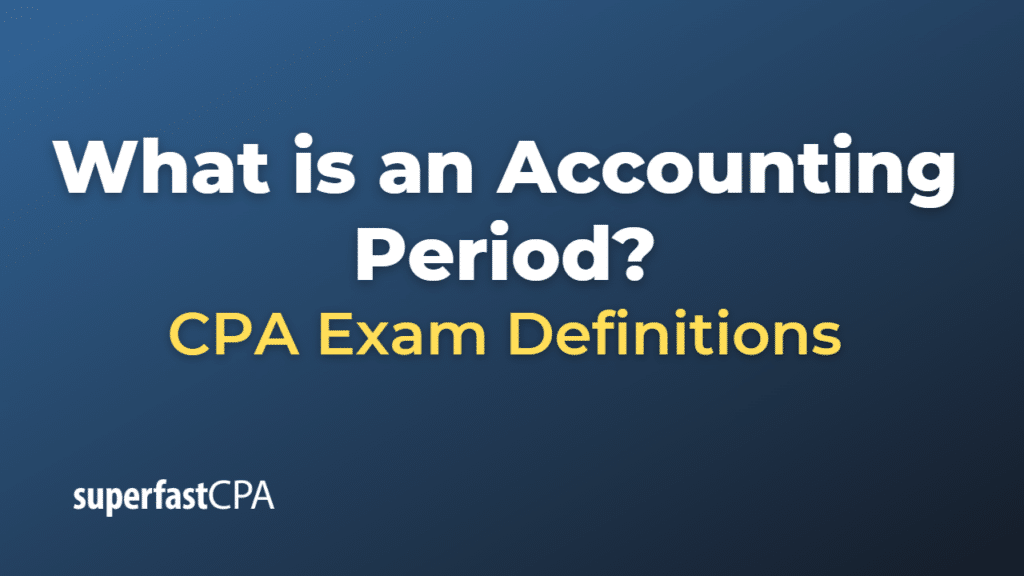Accounting Period
An accounting period, also known as a financial period or reporting period, is a specific time frame during which a company records, tracks, and reports its financial transactions. Accounting periods are used to consistently and systematically organize financial information, making it easier for businesses to analyze their financial performance, prepare financial statements, and comply with tax and regulatory requirements.
Accounting periods can vary in length, but the most common types are:
- Monthly: Many businesses use monthly accounting periods to closely monitor their financial performance, track cash flow, and make timely management decisions. Monthly accounting periods are typically 12 periods within a fiscal year.
- Quarterly: Quarterly accounting periods, consisting of three-month periods, are commonly used by public companies and some private companies for internal and external reporting purposes. Public companies are required to report their financial results to regulators and shareholders on a quarterly basis. There are four quarters in a fiscal year.
- Annual: The annual accounting period, or fiscal year, is a 12-month period used by businesses to prepare and report their financial statements, including the income statement, balance sheet, and cash flow statement. The fiscal year may align with the calendar year (January 1 to December 31) or follow a different 12-month cycle, depending on the company’s preference or industry practices.
It is essential for businesses to consistently apply their chosen accounting periods and adhere to the accrual basis of accounting (as required by Generally Accepted Accounting Principles or International Financial Reporting Standards) to ensure comparability, consistency, and reliability of their financial statements.
During an accounting period, a company records financial transactions in its accounting system, generates financial reports, and closes its books by adjusting and reconciling accounts as needed. The financial information for a specific accounting period serves as a basis for evaluating the company’s financial performance, making management decisions, and complying with tax and regulatory requirements.
Example of an Accounting Period
Let’s consider a hypothetical example involving a company called “HealthySnacks Inc.” that manufactures and sells organic snacks. HealthySnacks Inc. uses monthly, quarterly, and annual accounting periods for its financial reporting and management.
- Monthly Accounting Period: HealthySnacks Inc. closes its books at the end of every month to prepare monthly financial reports for internal management purposes. These reports help the company’s management to monitor sales, expenses, cash flow, and other financial metrics on a regular basis, enabling them to make informed decisions and adjust their strategies as needed.
For example, at the end of January 2023, HealthySnacks Inc. would prepare a financial report covering the period from January 1, 2023, to January 31, 2023.
- Quarterly Accounting Period: HealthySnacks Inc. also prepares quarterly financial reports for its investors and regulatory authorities. These reports provide an overview of the company’s financial performance over a three-month period and are useful for external stakeholders to assess the company’s performance and make investment decisions.
For example, HealthySnacks Inc.’s first-quarter report for 2023 would cover the period from January 1, 2023, to March 31, 2023.
- Annual Accounting Period (Fiscal Year): HealthySnacks Inc. follows a fiscal year that aligns with the calendar year, running from January 1 to December 31. At the end of the fiscal year, the company prepares its annual financial statements, including the income statement, balance sheet, and cash flow statement. These statements provide a comprehensive overview of the company’s financial performance and position over the entire year and are used for tax filing, regulatory compliance, and communication with investors and other stakeholders.
For example, HealthySnacks Inc.’s annual financial statements for the fiscal year 2023 would cover the period from January 1, 2023, to December 31, 2023.
In this example, HealthySnacks Inc. uses different accounting periods to meet various internal and external financial reporting requirements, enabling the company to effectively manage its financial performance, comply with regulations, and communicate with stakeholders.













